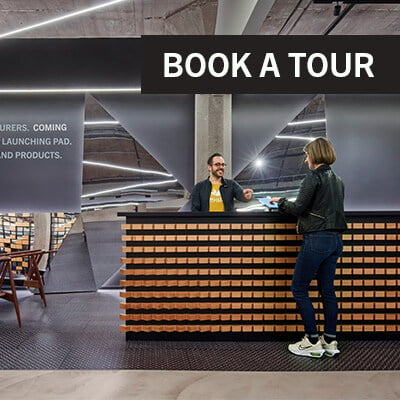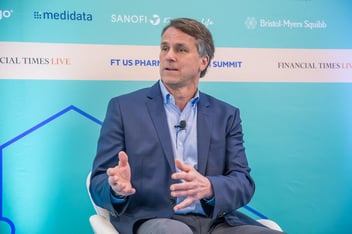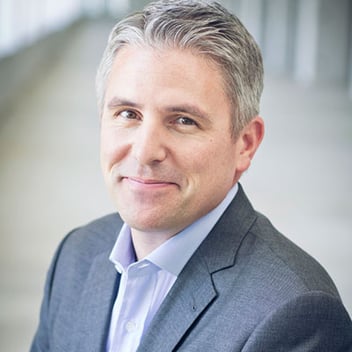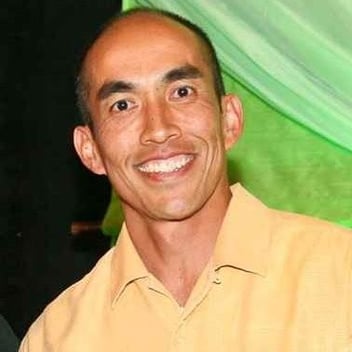mHUB CXO, Melissa Lederer, sat down with Shinola founder Tom Kartsotis and CEO Shannon Washburn for an Industry Disruptors conversation. mHUB’s Industry Disruptors events feature some of the best and brightest founders and innovators of our time. Tom Kartsotis founded FOSSIL in 1984, where he served as Chairman through 2010. In 2011 he founded Shinola. Tom has served on the Board of Directors of Burton Snowboards since 2004.
Shannon Washburn is the CEO of Shinola, where she leads a talented team of individuals who create world-class, handcrafted goods. Shannon guides the brand’s vision to become the next great American brand from Detroit, overseeing all aspects of the business. Prior to becoming president in early 2018, Shannon spent six years working with the watch and jewelry product development and design teams. Shannon has garnered experience in various aspects of the business over the course of her career from retail to product development to sales and international brand management. Prior to Shinola, Shannon was a buyer for Dillard’s before her 14-year tenure at Fossil. She was promoted to CEO of Shinola in 2019.
Melissa: As you navigated building a US manufacturing company, what are some surprises of things or challenges that you identified in terms of finding the talent and building relationships in a market you didn't know?
Tom: Well, I mean, and I'll tell you about this because I was more intimately involved than Shannon and then I'll let Shannon talk about the present day. What I feel like is that at the beginning of this thing, we did not realize how hard it was. So the first year we made 50,000 watches, this is a funny story. We got proof of concept in March of '13. And we sent out that ad where we tried to sell, you know, twenty-five hundred watches that we bought and we had huge demand. We sold out instantly and we were able to make 50,000 watches and we sold almost every one of them. I think we actually did some, maybe some of them we sold twice. And the straps were being made by some friends of ours in Florida factory called Roma.
And we went to Roma because we were budgeting. We didn't know what kind of volume could be the next year, a hundred, 150,000 straps. And we knew that we needed production. So we told them what we were gonna need. And there was just no way they could supply. So we contacted this company in Switzerland that we know that builds, watch strap and small leather goods manufacturing capabilities for companies all over the world. And they came in and they built in Detroit what I feel is maybe one of the most sophisticated watch, strap manufacturing facilities around. We cut no corners in terms of the cost of machines, just trying to give ourselves the highest priority or the highest probability of being able to train somebody to make a watch strap. So that's January and February of '14, March 1st of '15, we hired 50 people from the community who had some experience, sewing upholstery and stuff, and like something out of a bad bill Murray movie, we set out to make watch straps.
And what we learned was it's hard. So it took us a lot longer to make a strap that wouldn't have crooked stitching. But once we got there, we recognized that at some point people start training people. So our business model was one that a very low volume is very difficult to get to profitability. And in fact, we're not quite yet profitable. We'll get there in a couple of years, but if you have the patience and the desire to really do this training and get this right, very soon we could produce whatever number of watch straps we want to produce. And while we were doing that, we were creating a brand because we were kind of doing the right thing and people were kind of hanging on and following on that. And we got pretty good at telling stories about some of the people. And then we got adventurous and we went into other product categories, some of which I wish we'd never done, but, all the way to this hotel that we built a few years ago, it's quite special. I don't know if any of you've been there, but it's, it's my favorite hotel in the world. And it's not just because it's our company, but it's a cool place. And then we're looking at doing multiples of those and working on some other things like that.
Melissa: Shinola has intentionally supported Midwest supply chain and supply chain across the country. You've partnered with makers in Waterford, Wisconsin for the Shinola bike frames. You sort of leather from suppliers in Chicago and Florida. You partnered with folks in Detroit and Rhode Island and New York for the home product lines. So talk a bit about building those relationships and why that's so important to the overall Vision.
Shannon: I think the first word that comes to mind is our commitment to doing that. You know, it's always at the forefront of the product and the design teams is how can we do this in the U S? And so there's a lot of research that goes into finding those partners and whether it's working with some of those that you mentioned, or we've partnered just recently with a candle maker here in Detroit, or with York that does our sweatshirts, you have to do your research and you have to be committed to it, because I'll be honest, it's not always easy. So it's not the easiest path forward, but from our point of view, it's the right path. If we can find a way to build these communities around these different product categories, we think that's really great for us as an organization, but it's also great for these other companies that we can partner with. So it's really about doing your research and being committed to it. And then I think when we look for partners, we look for organizations that have like-minded business acumen. We believe in quality and a determination and humility. And, and we look for those within the partners, because whether we're building an internal team or an external team with our partnerships, we want to be sure that we all have the same core beliefs of what we're trying to accomplish.
Melissa: Tell me how this breakdown and the challenges in the global supply chain have impacted Shinola and what that mean as you think about the future supply chain more regionally.
Shannon: There's been certain categories that have been more affected by it. The supply of wood, the supply of metal and things or paper, even with our journals. Some of our suppliers in the U S have struggled getting that from overseas. In terms of leather goods, when, containers are full or the lead time from a port to getting to us in Detroit has pretty much doubled in a lot of instances. So we've had to really look at our spring go-to-market calendar and just kind of be able to shift and be nimble on when the product is going to arrive. Not unlike a lot of what we learned last year while going through the pandemic is that you have to plan, but you've gotta be agile and be able to pivot with whatever gets thrown your way. So I think that's been a big learning from us. And, I think we'll continue to see some of these challenges throughout this year. And then we'll start to see the supply chain get a little more balanced going into 2022.
Melissa: You shared briefly with me earlier about being so deliberate in how you think about creating a brand and the power of storytelling. I'd love to just hear a little bit about that and what are some lessons that you might be able to share with some of these entrepreneurs and how they might apply some of that to their own brands as they're building these businesses.
Tom: I think the first thing is that the brand is a reflection of the people inside of it, so that they have a sense of humor and they're goofy and they're hardworking. I think the brand will reflect that whenever the brand is really comfortable with people inside of it. The world's a moving target.
Shannon: Job creation is still at our core, but it's not only about creating jobs. It's about creating future opportunities for the team we have today. So that's one thing that's kind of shifted as we really look inward about how we grow our talent and give our talent more opportunities. Now I look at some of the people that started out back in 2012, building those first movements, and they're now the managers on the lines in the manufacturing factory. Giving opportunity to the team is really critical. Nothing that we're so focused on, especially this year, as we continue to grow those talents. And some of those things that we maybe have outsourced before, we're looking to bring some manufacturing back into Detroit. There's another opportunity that over the next year or two, we'll be able to add additional jobs to our team here. That's all really exciting as we move that initial mission forward.
Melissa: Talk a little bit about how the consumer products and luxury brand landscape has changed over the past decades and what’s coming next.
Tom: I can tell you that this pandemic has created a deep scar in our culture. Right now everybody's happy to be able to get out. We're all grateful that we'd go have dinner and see friends, but this is going to stick with us for a long time. I noticed during the pandemic is there was a layer of people that own companies who were independently wealthy and their companies were fine. They basically sat on the side and watched the parade go by. We sip tequila and really didn't have much to do with anything. Other people were just scared and running for the Hills and trying to survive. And then there were a handful of people that were trying to figure out what the world looked like in the future. To me, what it looks like in the future is, brands that really don't cut corners and that do hold true to what they're saying and doing, I think these brands will be rewarded.
Melissa: Let's change topics and give some advice for some of our founders that are online. Shannon, do you have advice for female founders and finding success in leadership and who are some of the people that have helped you along the way to further you in your career?
Shannon: The first bit of advice, and I don't even think it's just for females, but I've learned in this last year is to be available for your teams. You really are busy and you're pulled in a lot of different directions, but being able to be present and available to give that direction is so, so important. And I know there's some days I feel like, oh, I just, I don't want to take one more email or one more call, but it's so important in a leadership role, you have to be that person that can be there when somebody needs you. For people that are starting out, it's about a partnership of art and science. I think having the balance of those two things and having people that are able to have a great partnership and recognize that it needs to be a balance, to get to accomplish what we want to do. We're a design creative company and we always will be that's at our core. We're about telling great stories through quality products, but we've got to do it profitably. So you have to be able to balance everything to keep the train on the tracks.
Tom: I realized that when you go through any endeavor, any journey, whether across town or the moon and back, all that matters is you share the experience with people that you love. That's what makes life special. Because ultimately that's all there is. And I think if you walk through our company, it's palpable. You can list companies that were going nowhere 5, 8, 10 years ago that are going to be meaningful companies. The worries of the world, they feel the same. They have the same kind of sensibility that I think is coming from this younger generation as I look at it.
Melissa: Tell us what's next for Shinola and its journey. And as you expand into new categories, what are the pillars you'll be leaning on to fulfill those goals as the next kind of plateau for the organization?
Shannon: In April of last year we had our 2021 reimagination meeting because we knew that we had to think about how the world's going to be different and how do we get ourselves prepared? We knew that our core, we were always going to be about creating a dominant brand platform and great stories, great storytelling, but we also knew there was a shift in how people are going to shop. So we very quickly had to lean into being best in class digital. And we've put a lot of effort behind that in terms of our team and our technology. And you're going to see a real change on how we do things digitally.
We have to be efficient operationally and going through last year, we learned so much. Capacity was challenged, you didn't have all your components. We learned a lot on how to be agile and nimble and to launch product differently so we can meet the guests where they are. That's something we're really focused on.
We're going through brand extension in licensing, new licensing opportunities and some very exciting things that are going to be announced later this summer. Some new product categories like eyewear that we're currently going to test where we think there could be licensing opportunities in the future. We'll continue with hospitality and we think that's a huge opportunity that the Shinola hotel here in Detroit has been a great brand builder for us. It's just been an extension of who we are and we think there's a lot of opportunity in that realm as we look forward over the next three to five years.
Through last summer and a lot of the unrest we really looked inward and we said diversity and inclusion for our organization is one of the most, if not the most important thing for us as we go forward. So we worked and we're getting ready to launch an apprenticeship program for our current team. And we call the whole initiative: Be me, Be more, and Be represented. And that's important to us. I mentioned it earlier, but how we continue to invest in our people, it's really at our core. And like Tom said, a brand is the reflection of the people and we want to give our teams and our people the best opportunity we can. So they continue to grow with us.
Melissa: What programs does Shinola have in place to promote innovation and generate new ideas? Are you ever looking at communities like this and innovators that are coming up with new ideas?
Tom: Yeah. We have our ear to the ground and people are coming to us with the 3d printing. You know, I feel like 3d printing of consumer products is a thing that's early now. But you know, I know guys that are talking about making shoes that way. And I think if you're looking at a 20 year horizon, I think that that's going to happen in a lot of categories where robotics and technology are going to make it. There's more and more people try then perhaps over time with a couple of people showing success that maybe the world can start thinking about how technology can make jobs at the lower end of the scale, much more with better jobs: more fun, more high paying, more productive. And I think that's kind of the core of what we're trying to do as a brand.
Melissa: How are you leveraging automation and IOT in driving efficiency, process improvement in manufacturing?
Shannon: It's not really about automation really. For us, it's just about efficiencies on our production line and the way we do things and the way we launch our watches. It's just educating the team on how to do things better and how you do a single piece through a flow. We recently hired three people that came from McKinsey and other operational minded companies, and that's had a huge impact on us. So we're not looking to really get anything to be more automated, but it's just really training the teams to think differently.
Melissa: If there's an opportunity in the market, how do you get it out there and test it and think about that quickly?
Tom: Well, every product category has different lead times and it's been like this since the dark ages. So I can remember in 1988, the Batman movie was coming out and it was going to be a big deal. So we had made a thousand Batman watches, as soon as the movie came out, those things sold out instantly. There was demand for like 5,000 more, which was a lot of watches for us back then. The hardest part of the supply chain in those years was the case, the metal part. So the way we solved that is I went to Hong Kong, found a case manufacturer, got an to make 4,500 Batman watch cases over a weekend. And from then on, he was known as Batman people still call him Batman. The thing is you got to get a test, you got to find out, make sure consumers are responding well.
And once you have that test, then you have to figure out how to make it in the quantities that you don't want to oversaturate it either. You want to make it so that there's somewhat of a shortage like this camp you'll speed by watch, we wrestled with how many of them we could make. You just kind of feel your way around and they use whatever instinct or anecdotal evidence that you can gather your ear to the ground and it's do the best.
Melissa: What internal tests or vetting processes does your leadership team go through to determine if the idea goes too far beyond the elasticity of the brand?
Tom: We've got a very small group of people that really know and love this brand. It's probably six people that are really intimately involved everyday on the brand and we'll come up with ideas and some of them are crazy and it used to be where we would just do crazy ideas. Now that Shannon's in charge, she's our adult supervision, if you will. The process is can we fit it into our budgets? And does it make sense? And what's the reason that's going to enhance the brand? We do things that don't necessarily enhance our bottom line. Like we have a toaster coming, it's going to be cool but it's not going to be something that's going to really move the needle in terms of our top line.
Melissa: Do you think that you're, more willing to try crazy things or less than you are now that the brand is where it's at? Earlier days or current days more risk averse?
Tom: I think that we're just smarter. You'll see things coming from us that you would never imagine.
Shannon: We're doing all the other stuff that we do right, and we're doing it really efficiently and it's making sense, then we have the ability to try a toaster and try some of the things that keep the brand fresh and relevant in the market. So again, I go back to the balance of the art and the science. If you're better at the science, you've got a lot more room with the art. I think that's the point where we are in our organization right now. We're going to be able to create something incredibly exciting things moving forward that are really going to set the tone for how we look for the next three to five years.
Learn more about Shinolaand stay tuned for mHUB's next Industry Disruptor's events.





